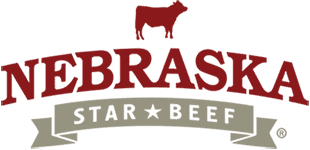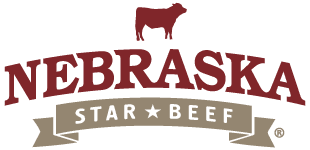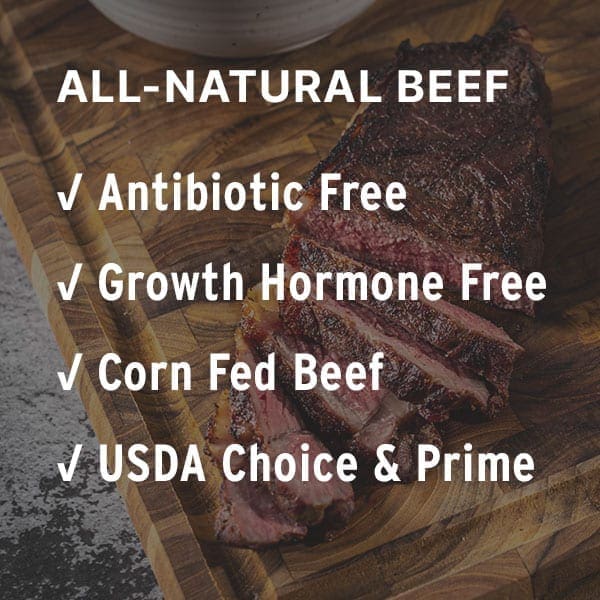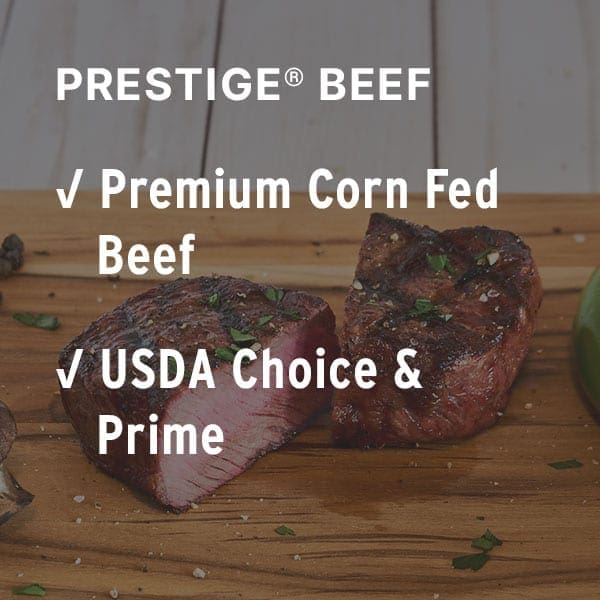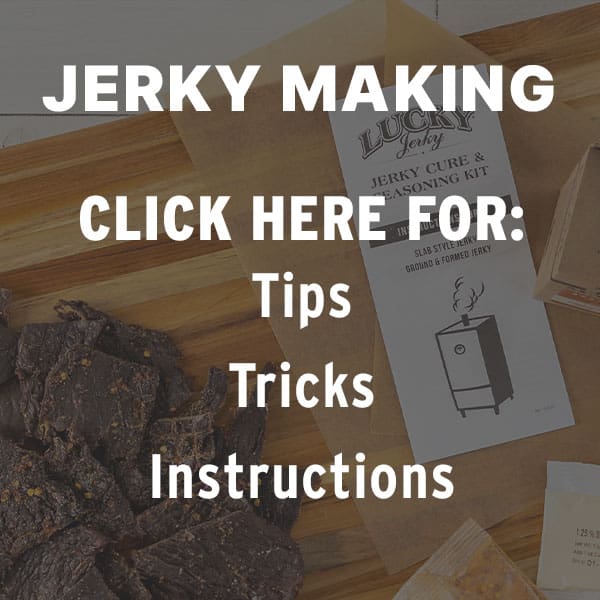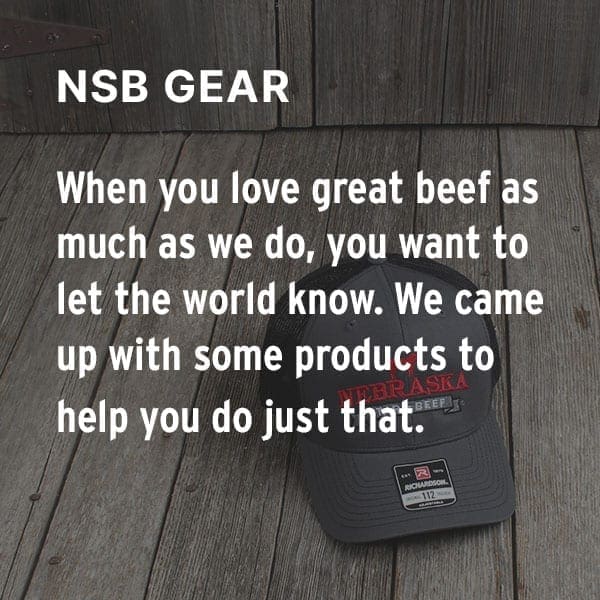In addition to being one of Dokken’s most successful singles, “Into the Fire” is typically a metaphor for things going from bad to worse. But that isn’t the case at all for these 12oz NY Strip steaks. Something very good is going to go into the fire, and then come out even better.
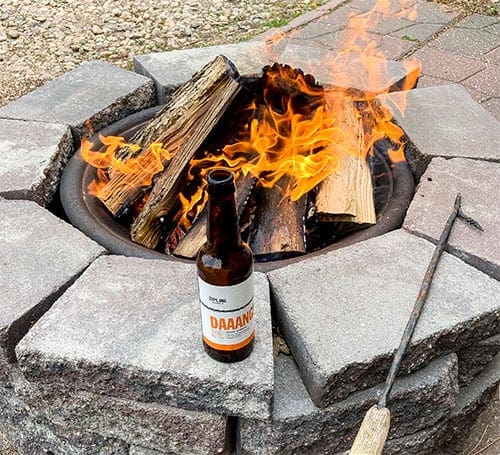 The fire. The fire is the best place to start and it is important to have the correct fire for this project. I prefer a wood fire for this project, but stick to good, clean firewood or lump charcoal. It is important – as it is with all cooking fires – to make sure that it is a clean fire. Fires burn in stages. Wood is a common fuel in most “camp fire” type situations. That said, wood isn’t what we want to use for the cooking. We actually need to transform the wood into charcoal before we cook on it. The reason it is important to completely burn the wood is to make sure that all of the sugars, minerals, oils and VOCs that might be present in the wood are fully combusted and that we are cooking on clean heat.
The fire. The fire is the best place to start and it is important to have the correct fire for this project. I prefer a wood fire for this project, but stick to good, clean firewood or lump charcoal. It is important – as it is with all cooking fires – to make sure that it is a clean fire. Fires burn in stages. Wood is a common fuel in most “camp fire” type situations. That said, wood isn’t what we want to use for the cooking. We actually need to transform the wood into charcoal before we cook on it. The reason it is important to completely burn the wood is to make sure that all of the sugars, minerals, oils and VOCs that might be present in the wood are fully combusted and that we are cooking on clean heat.
There are two ways to build a good cooking fire – the fun way and the fast way.
- The fun way: We start a camp fire and burn the wood until it turns into charcoal which is catharticAF and a great way to spend some quality time with friends and maybe even enjoy some adult beverages if you’re into that sort of thing.
- The fast way: Buy a bag of quality lump charcoal and start a big pile of it on fire in a safe place, grill, fire ring, fire pit, etc. It’ll get to a bed of embers quicker than firewood and still be fun, but just not as much for for as long.
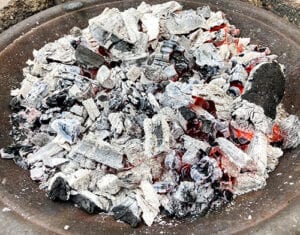 When it comes to the cooking part of the project, we are looking for a good bed of evenly sized red hot charcoal embers – about the size of small river rock. This bed of charcoal should be ashy white on the surface, and red/orange throughout the remaining bed. There should not be any visible wood remaining, only fairly evenly sized chunks that are all glowing red/orange below the ashy surface.
When it comes to the cooking part of the project, we are looking for a good bed of evenly sized red hot charcoal embers – about the size of small river rock. This bed of charcoal should be ashy white on the surface, and red/orange throughout the remaining bed. There should not be any visible wood remaining, only fairly evenly sized chunks that are all glowing red/orange below the ashy surface.
A logical question comes to mind: “Why not just use charcoal briquettes??” The simple answer is, one could…BUT…I don’t know what is in them, so I personally stick to wood…or lump charcoal in a pinch. I want to know what I’m burning and using to cook my food.
Charcoal briquettes are great for making heat in grills as they are essentially lump charcoal that has been ground to a powder, then pressed back into a uniform shape. They burn evenly and create a nice heat source for cooking on. Briquettes are more densely packed than lump charcoal or wood, so they tend to burn longer and hotter for the purpose of cooking. They are also bound to have little chunks of stuff, dirt, grime, etc, that can get mixed in with them when they are being pressed and could potentially come off on the surface of the steaks if cooking directly on top of charcoal briquettes.
While the fire is burning down into charcoal embers, we will move on to the steak.
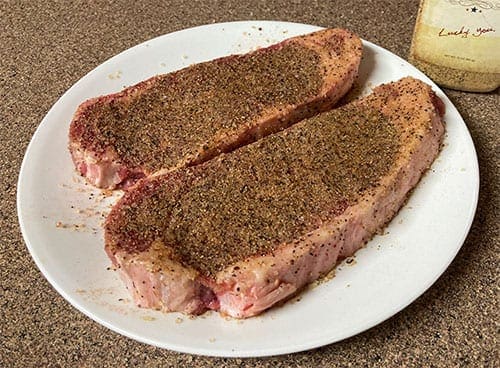 For this exercise, we’re using my personal favorite steak, the 12 oz NY Strip. Just like always, we want to start with the thawed steaks at room temperature. Pat the steaks dry and season. Using this particular cooking method, I am going to season the steaks a little more heavily than I normally would if I were grilling or reverse searing. The steaks will be cooking on an irregular and dynamic surface and a decent portion of the seasoning will be lost in the cooking process.
For this exercise, we’re using my personal favorite steak, the 12 oz NY Strip. Just like always, we want to start with the thawed steaks at room temperature. Pat the steaks dry and season. Using this particular cooking method, I am going to season the steaks a little more heavily than I normally would if I were grilling or reverse searing. The steaks will be cooking on an irregular and dynamic surface and a decent portion of the seasoning will be lost in the cooking process.
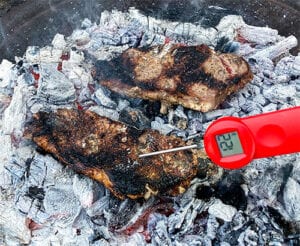 When the fire has turned into a nice bed of red hot embers, simply lay the steaks onto the embers. From here on out, standard steak cooking procedures apply – watch the internal temp – flip the steak when the internal temp hits around 100F, pull them at around 115-120F and rest for 5 to 10 minutes before carving.
When the fire has turned into a nice bed of red hot embers, simply lay the steaks onto the embers. From here on out, standard steak cooking procedures apply – watch the internal temp – flip the steak when the internal temp hits around 100F, pull them at around 115-120F and rest for 5 to 10 minutes before carving.
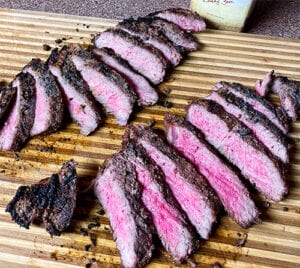 While the steaks are resting is the PERFECT time to make some S’mores for dessert. The fire will be at the perfect temp for lightly toasting marshmallows. Allowing the S’mores to rest until dinner is finished will assure that the mallow and chocolate are in a very edible state and you don’t burn your mouth with that chocolate/mallow lava. If you’re into burning your mouth on fresh S’mores, the fire will still be plenty hot to make them after the steak dinner.
While the steaks are resting is the PERFECT time to make some S’mores for dessert. The fire will be at the perfect temp for lightly toasting marshmallows. Allowing the S’mores to rest until dinner is finished will assure that the mallow and chocolate are in a very edible state and you don’t burn your mouth with that chocolate/mallow lava. If you’re into burning your mouth on fresh S’mores, the fire will still be plenty hot to make them after the steak dinner.
When the dinner is done, add a few more pieces of firewood to the coals, this will stoke the flames back up to bring warmth to the conversations with family and friends that follow.
